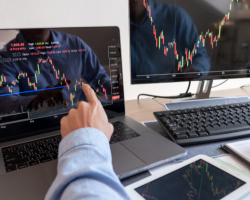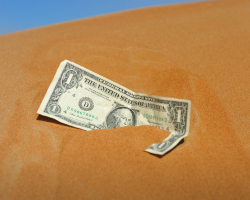The Bearish Trend: How to Benefit from Falling Markets
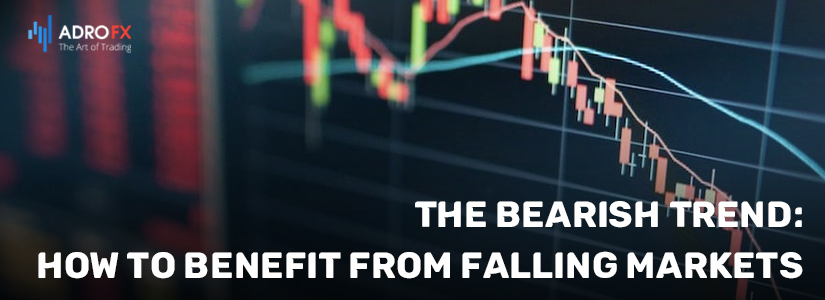
Why are economies cyclical – growth is inevitably followed by decline? The fact is that all processes in the physical world are cyclical. The nature of any economy is based on supply and demand. And both buyers and sellers can be on the strong side. Suppose there is an economy in a phase of active growth, with low inflation, growing GDP, and other positive fundamentals. In such an environment, high and steadily rising prosperity would stimulate demand for goods and services and positively affect all production and increase the stock price of manufacturing companies.
There are times when economies face powerful external challenges. For example, energy prices have risen as a result of a dramatic shortage of raw materials in the market. And it is clear that this deficit is not for months, but for years to come. The shortage provokes the growth of prices of raw materials at a rapid pace.
And if the economy of some country before the rise in commodity prices actually had successful production at the expense of cheap energy, then, faced with an increase in energy costs several times, found itself in a situation where it can no longer operate on the former model. The producers' revenues are falling. At the same time, the prices of the end product have to increase drastically. An inflationary spiral is being set in motion, which is moving very quickly into retail. The stocks of manufacturing companies fall. And some groups of companies or entire industries find themselves in a sad situation in which it is clear that the issuer will not soon be able to get out of the bearish circle of low revenues or even loss-making. Shares of such companies end up in a long bearish trend. And only structural changes in the economy can help them - either cheap raw materials again, new types of energy, or a new business model.
Either way, a long bearish "winter" cannot be avoided, because all innovations are created/introduced slowly. And usually, if stocks enter a bearish cycle, cryptocurrencies also fall very quickly and then enter a stagnant flat period, which market participants don't like so much.
But the good news is that investors and traders alike can capitalize on a bear market. The key is to find the right assets and live markets where there is at least some volatility.
What Is a Correction in the Stock Market?
A correction is an event (phenomenon) on a smaller scale than a bearish trend or the market as a whole. A characteristic sign of a stock market correction is, for example, when the U.S. broad market index, the S&P 500, falls below 10% or more of its highs.
A stock market correction usually lasts 3-4 months. But you should always keep in mind that a correction can easily turn into a bear market.
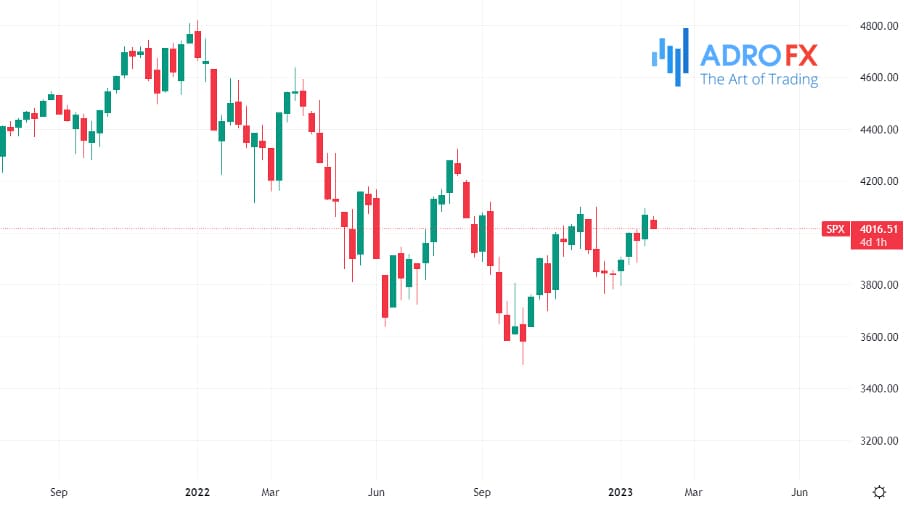
Thus, it can take years to recover. It all depends on the fundamentals. How the economy feels, simply put. Let's talk about how to reduce potential losses and earn gains in a stock market correction situation.
- Earning on market corrections and protecting your portfolio;
- Applying risk management rules (no more than 10% per trade).
Suppose you have $2,500 of investment capital. Let's say you buy stocks, guided by the fact that their value does not exceed 10% of your portfolio balance. That is, you can spend $250.
For example, if you want to buy shares of Bank of America at $26 per share, you need to go in with no more than 10 shares.
In doing so, you want to make sure you have a Stop Loss set, which is minus 10% of the price at which you opened the trade. So, if your entry price is $26, you should also have a Stop Loss order at $22.5.
If you place no more than 10% of your portfolio in stock and have a Stop Loss price equaling 10% of your entry price, you won't lose more than 1% on the trade. If you buy 10 shares of BAC at $26 per share, your maximum loss will be $35 if the price reaches your Stop level.
By the way, it is convenient to use the interactive trader's calculator to quickly calculate your position.
Let us imagine that we are in the process of a stock market correction. Above in the text, we recommended allocating 10% of the portfolio to trade. But if the correction is prolonged or if you open a position after several consecutive failures, you should trade more defensively, for example, allocating 5% per trade. Thus, if you allocate 10%, you will get a maximum of 10 open trades. If you allocate 5%, you can already afford 20 trades.
In addition, the Stop Loss price remains the same and is minus 10% of your entry price. This, in turn, creates a maximum risk per trade of 0.5%. This approach reduces your losses to a microscopic level. The logical question is, can you just close the trade and wait for the correction to pass? Certainly, you can choose not to open trades. But you will never know exactly when the stock market correction will end.
By the time the correction ends, when you decide to start trading, you may have already missed out on some interesting opportunities.
Market Correction: How to Choose Stocks Properly?
What is the best way to diversify your portfolio when the market is in a correction? Follow the market leaders. Not to put all your eggs in one basket - that's clear. But how do you know if that basket is designed to last? You can, for example, use stock screeners. There are many ways you can use a stock screener, as the combinations of settings and parameters are countless. You can use a proven principle from William O'Neil's book, "How to Make Money in Stocks: A Winning System in Good Times and Bad."
"What seems too expensive and risky to the bulk of people usually gets more expensive, and what seems cheap and safe usually gets cheaper."
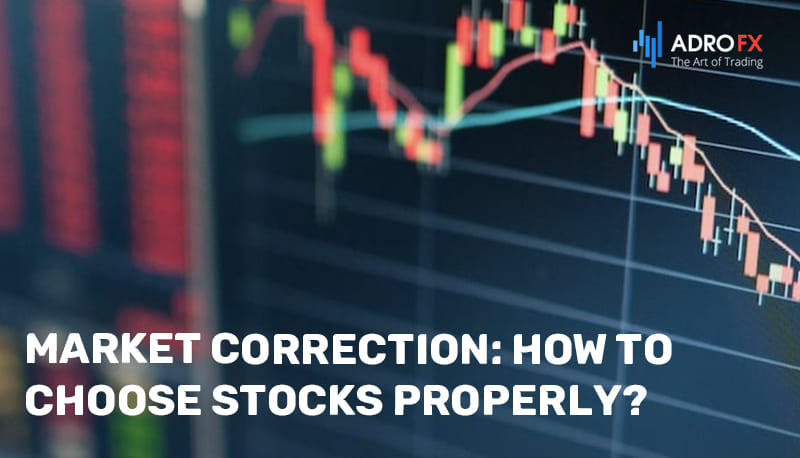
Imagine seeing a stock that consistently performs well despite a stock market correction. That's something.
Historical data suggests that your chances of losing funds decrease over time when you trade stocks at their 52-week highs. Most screeners have this parameter.
Stock Market Correction: Trading Techniques
There is a way to reduce risk and potentially increase returns on every trade. We have already learned something about minimizing risk from the text above. Now let's try to reinforce the above with practical useful specifics.
Allocate a small percentage of the deposit to a trade
For example, you have a $5,000 account and you placed an order with Tesla stock for a 5% deposit with a stop minus 10% of the entry price. The trade is in a daily time frame:
Now you need to wait for the stock price to start moving in your favor, break out the nearest price high, and close above it or in the resistance area. It is very useful, as these lines help predict price behavior.
Once the price breaks out, we should move on to the next step.
Scale Up and Move the Stop to Breakeven
The idea is that ideally, the stock should first prove that it really has potential. And then you open a trade. So we're in a stock market correction. You add another 5% to your position in the stock to scale your trade.
You move your Stop Loss to the breakeven level of the average price based on your entire position, where you won't lose a cent.
Watch Your Stop
There are so many ways to keep track of your stop. You can use a Trailing Stop, or a Moving Average Trailing Stop, there is no better method. You can take either one.
When Does a Stock Market Correction End?
A stock market correction usually ends in 3-4 months. But that is if the correction does not turn into a sustained bearish trend. There are no clear rules that can predict when a correction will end. What to do then? Watch the price. It should break out nearest high and close above it – that would be a signal. That's a chance that the stock market correction is over.
Final Thoughts
Trading during a stock market correction is certainly not easy, as false breakouts and reversals happen more often. The most important point is how well you manage your risk and your trades, not how well you combine indicators.
About AdroFx
Established in 2018, AdroFx is known for its high technology and its ability to deliver high-quality brokerage services in more than 200 countries around the world. AdroFx makes every effort to keep its customers satisfied and to meet all the trading needs of any trader. With the five types of trading accounts, we have all it takes to fit any traders` needs and styles. The company provides access to 115+ trading instruments, including currencies, metals, stocks, and cryptocurrencies, which make it possible to make the most out of trading on the financial markets. Considering all the above, AdroFx is the perfect variant for anyone who doesn't settle for less than the best.



